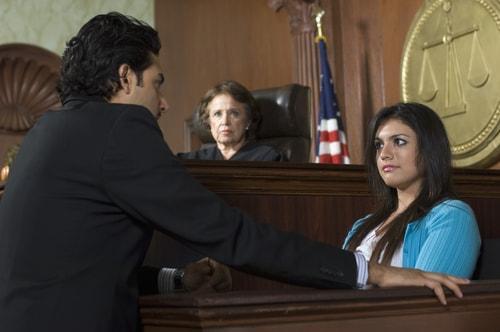Recent Tragedy Exposes Weaknesses in Eyewitness Testimony
 Consider a hypothetical scenario in which you are in line at your bank waiting for a teller to call you over. Suddenly, at one of the other teller windows, you see a person holding a gun. The person is yelling for everyone to get down and demanding that the bank employee hand over cash. You realize that there is little to be gained from arguing with a person holding a gun, so you get down on the floor and cover your head with your arms—but not before you sneak a look at the would-be robber’s face.
Consider a hypothetical scenario in which you are in line at your bank waiting for a teller to call you over. Suddenly, at one of the other teller windows, you see a person holding a gun. The person is yelling for everyone to get down and demanding that the bank employee hand over cash. You realize that there is little to be gained from arguing with a person holding a gun, so you get down on the floor and cover your head with your arms—but not before you sneak a look at the would-be robber’s face.
Now for the million-dollar question: Would you be able to accurately describe the face you saw when the police get your statement later? If you were like most people, you would probably answer the question with a resounding “yes.” If you really were like most people, however, the description you give would probably not match images taken from the bank’s security cameras as closely as you might expect, even though you reported everything exactly as you remembered it. This is one the major weaknesses in eyewitness testimony and one of the most important things to keep in mind if anyone ever claims that they saw you commit a crime.
Child Shooting Victim in Houston
On Sunday, December 30, a 7-year-old Houston girl named Jazmine Barnes was killed when a gunman opened fire on the car in which she, her sisters, and her mother were sitting. When the mother and her surviving daughters were asked what they saw, they told police they remembered a red pickup truck being driven by a thin white man in his 30s or 40s who had a five-o’clock shadow. For several days, police in the area used the description as a basis for their investigation, but an anonymous tip started pushing investigators in a different direction.
This past Sunday—one week after the shooting—authorities in Texas announced that they had arrested and charged a 20-year-old black man with capital murder in relation to the shooting. A second man—who is also black—was arrested and charged a few days later. Prosecutors have indicated that the men shot up the car in the belief that it was the car of some people they had gotten into an altercation with the previous night.
A Possible Explanation
Several experts have come forward to offer a reasonable explanation for why the victim’s family remembered the shooter wrong. They largely agree that a traumatic situation pushes a person’s brain into survival mode in which smaller details become irrelevant. It is more important to see the bigger picture and to find an avenue for escape than for the brain to make a note of what color an assailant’s eyes are or whether the assailant is old or young.
When a person is pressed for details after the fact, his or her brain is likely to fill in the gaps of what is missing. Sometimes the fill-in information might be other things the person saw around the same time or details that the brain simply assumes. This often happens naturally with no attempts to deceive on the part of the witness. In fact, the witness might truly remember a version of events that never occurred.
Law enforcement officials believe that there was a red pickup truck on the scene and that it was probably driven by a thin white man in his 30s or 40s. That man, however, is no longer considered a suspect. The police are now hoping to get in touch with him as another potential witness to the crime.
Call a Hartford Defense Attorney for Help
If you are facing criminal charges based on another person’s eyewitness testimony, an experienced Connecticut criminal defense lawyer can help you build an aggressive defense. Call 860-290-8690 for a free, confidential consultation at Woolf & Ross Law Firm, LLC today.
Sources:
https://www.nytimes.com/2019/01/06/science/stress-trauma-eyewitness-events.html
https://www.usatoday.com/story/news/nation/2019/01/09/jazmine-barnes-second-man-charged-7-year-olds-shooting-death/2522767002/
https://www.cnn.com/2019/01/07/us/jazmine-barnes-shooting-differing-accounts/index.html






